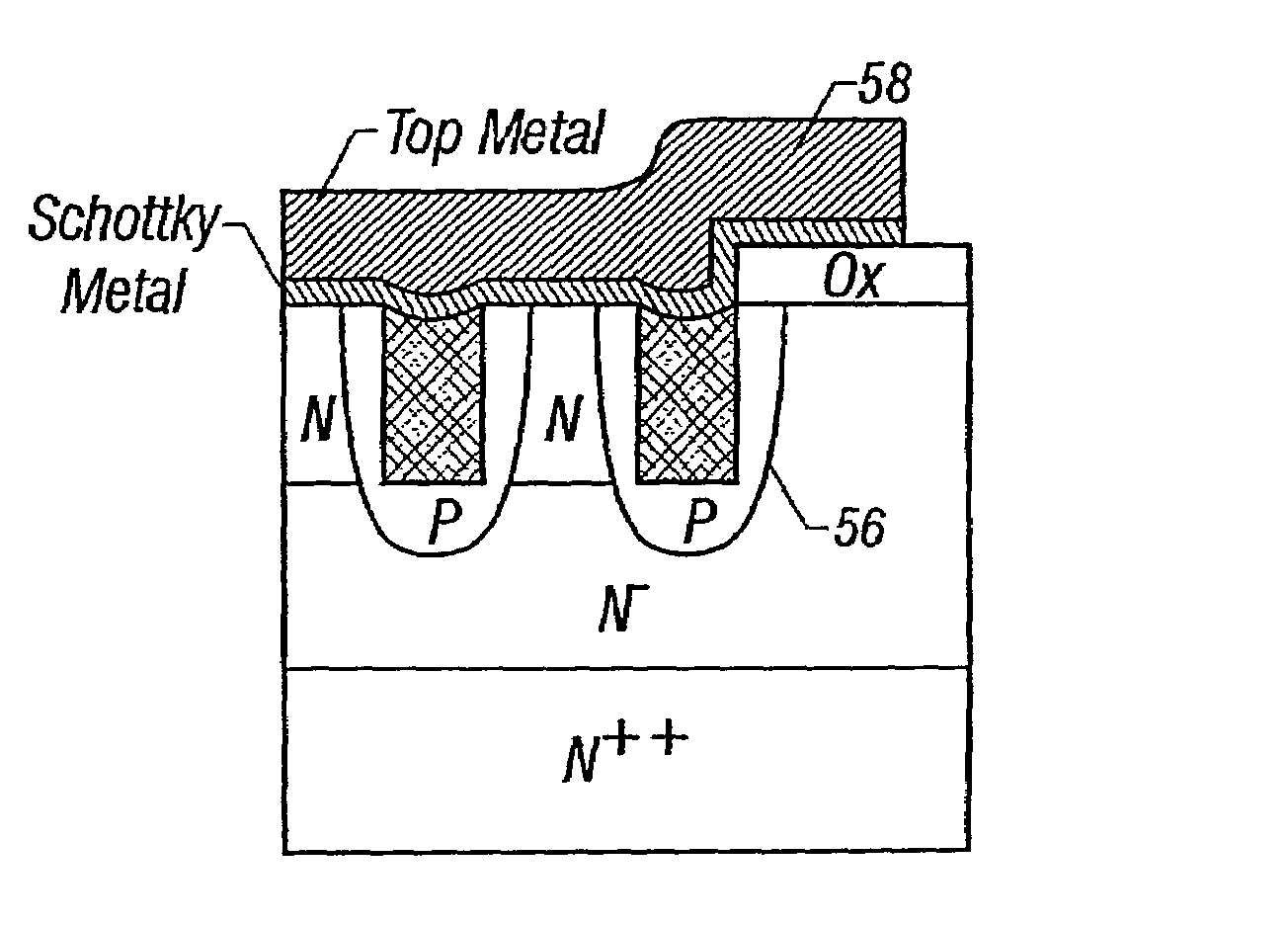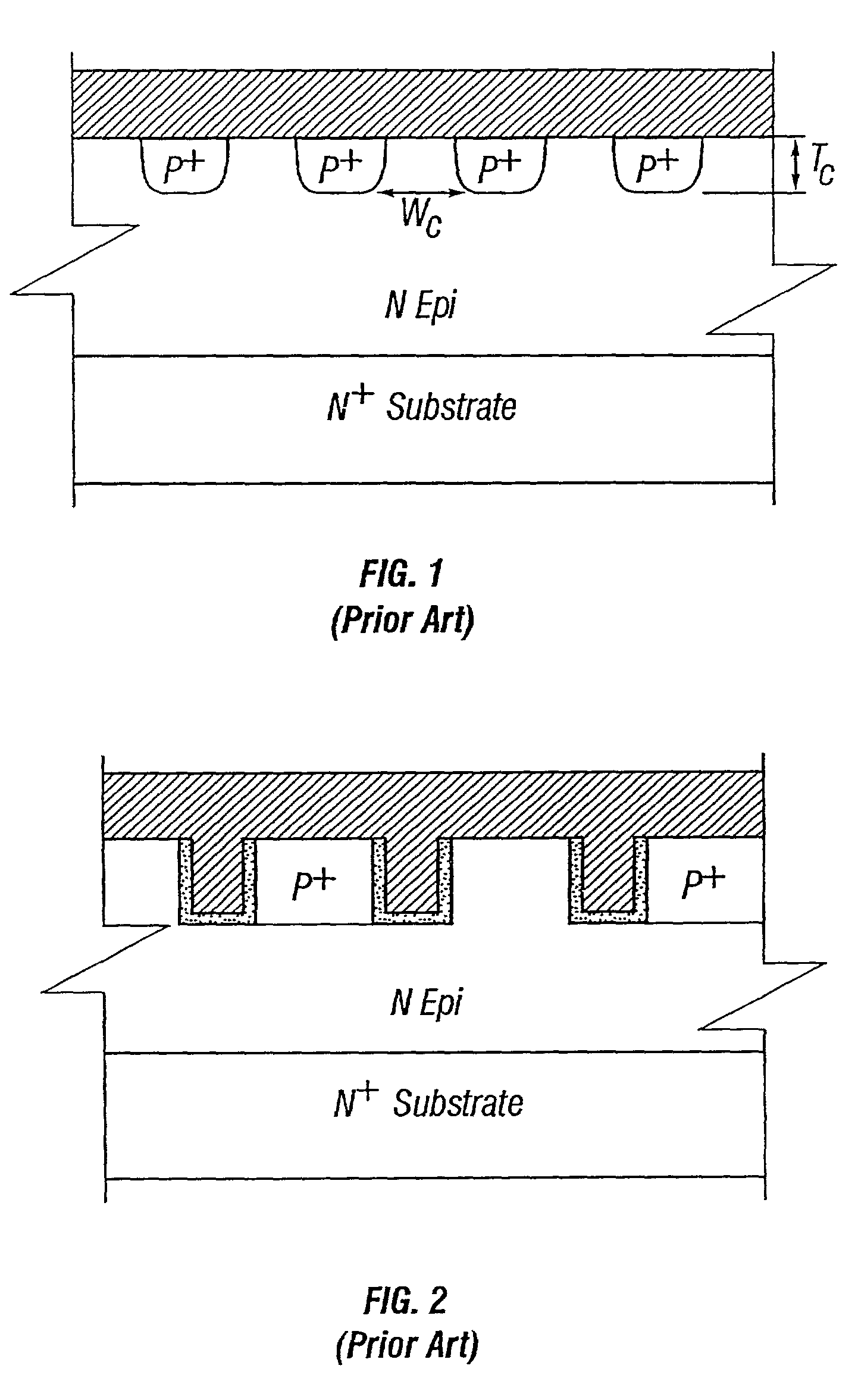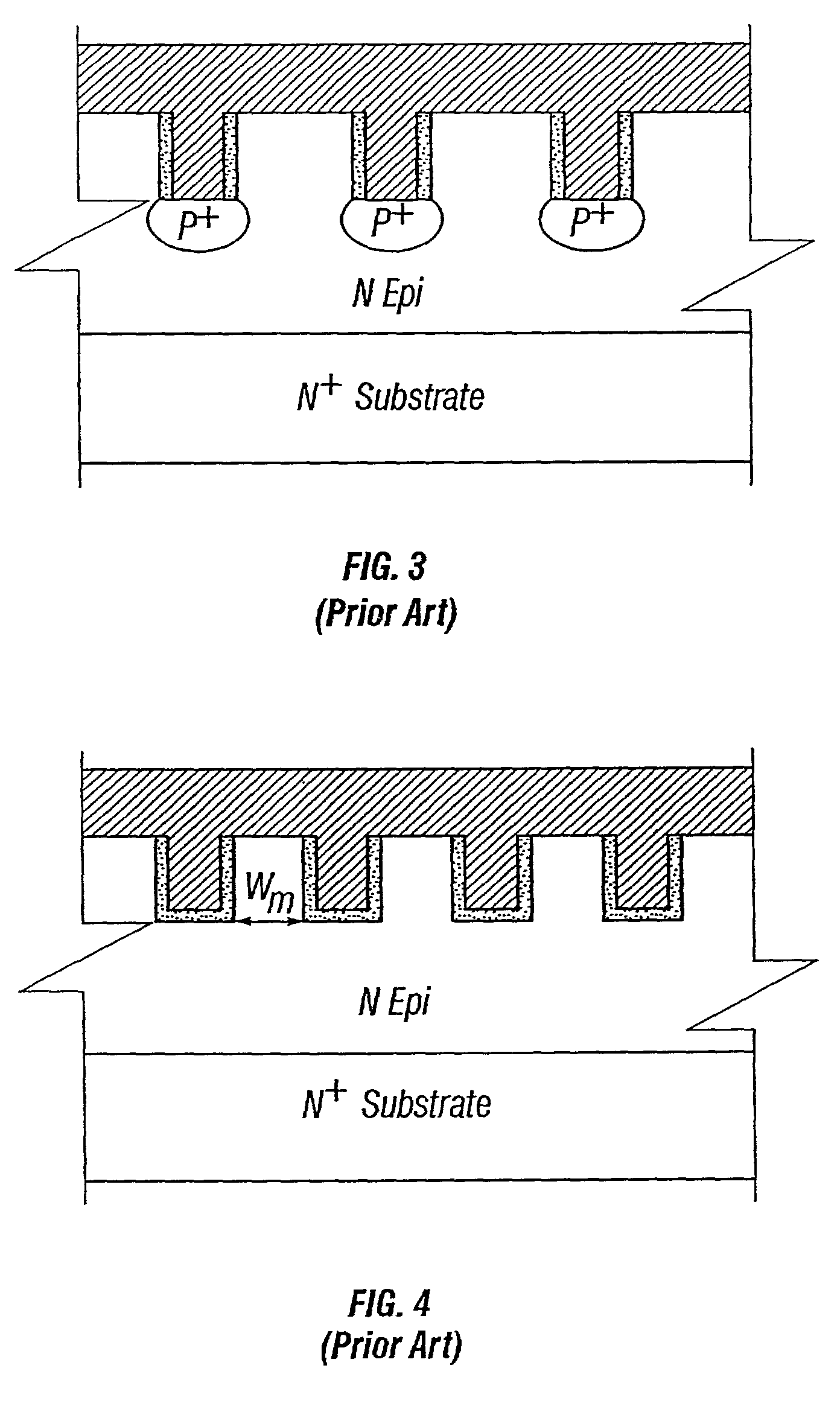Method of fabricating trench junction barrier rectifier
a technology of trench junction and barrier rectifier, which is applied in the field of metal-emiconductor rectifying devices, can solve the problems of reducing circuit efficiencies, increasing power loss, and reducing the turn off time of the diode, so as to reduce the area consumed by the trenches and by the lateral diffusion of the pn junction, and reduce the lateral diffusion of boron along the semiconductor surfa
- Summary
- Abstract
- Description
- Claims
- Application Information
AI Technical Summary
Benefits of technology
Problems solved by technology
Method used
Image
Examples
Embodiment Construction
[0042]As described above, an object of this invention is to provide a Schottky diode structure minimizing the barrier lowering effect, integrating an avalanche-rugged PN clamping diode, and allowing easy fabrication.
[0043]An embodiment according to this invention is shown in FIG. 6, which shows a trench junction barrier Schottky diode 10. Schottky diode 10 is formed in an N+ silicon substrate 12, on which an N-epitaxial (epi) layer 14 is grown. Epi layer 14 is subdivided into two layer, designated Nepi1 and Nepi2, each of which has a different doping concentration of N-type atoms. Trenches 16 are formed in the top surface of epi layer 14. A P-type region 18 is formed adjacent each of trenches 16, and region 18 forms a PN junction 20 with the N-type portions of epi layer 14. Trenches 16 are separated by mesas 22 and are filled with polysilicon 24. The top surface of polysilicon 24 is approximately coplanar with the top surfaces of the mesas 22. A metal layer 26, formed of a Schottky ...
PUM
 Login to View More
Login to View More Abstract
Description
Claims
Application Information
 Login to View More
Login to View More - R&D
- Intellectual Property
- Life Sciences
- Materials
- Tech Scout
- Unparalleled Data Quality
- Higher Quality Content
- 60% Fewer Hallucinations
Browse by: Latest US Patents, China's latest patents, Technical Efficacy Thesaurus, Application Domain, Technology Topic, Popular Technical Reports.
© 2025 PatSnap. All rights reserved.Legal|Privacy policy|Modern Slavery Act Transparency Statement|Sitemap|About US| Contact US: help@patsnap.com



